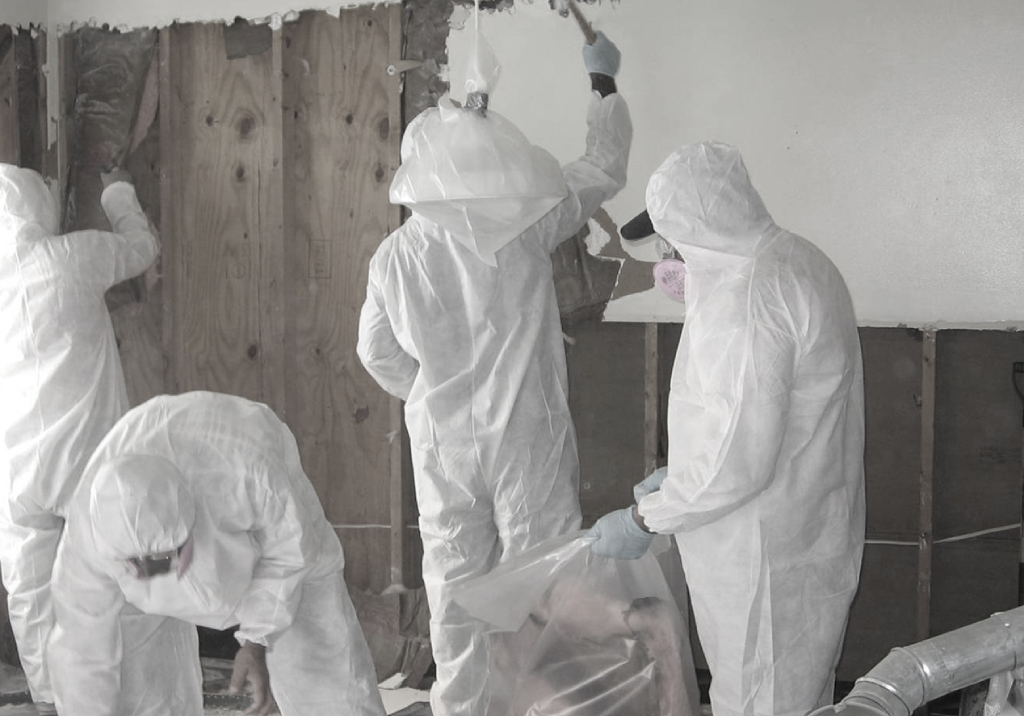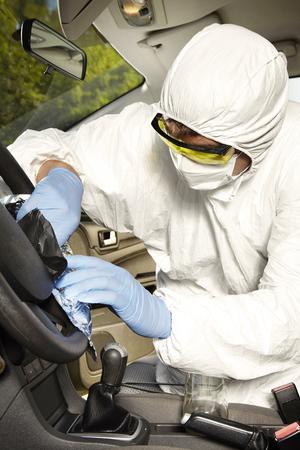Flood Damage Restoration: Quick and Efficient Healing for Your Home
Specialist Biohazard Cleansing and Decontamination for Blood, Bodily Fluids, and Hazardous Products
In the world of biohazard cleaning and decontamination for blood, bodily liquids, and dangerous products, accuracy and know-how are critical. The prospective health and wellness threats related to direct exposure to biohazards highlight the critical need for careful handling and complete cleaning. Specialized training outfits professionals with the understanding and abilities essential to address these dangerous scenarios effectively. Nevertheless, it is not just about cleaning up; the significance of employing correct decontamination methods can not be overemphasized. As we browse the elaborate landscape of biohazard cleaning, understanding the nuances of policies, compliance, and the customized devices at play comes to be important in making sure a risk-free and extensive purification process.
Health Dangers of Biohazard Direct Exposure
Direct exposure to biohazards postures significant health threats that can lead to serious repercussions for areas and people alike. Biohazards incorporate a large range of biological substances, including blood, physical liquids, mold, germs, infections, and other potentially infectious products. When individuals enter into contact with these biohazards, whether with mishaps, incorrect handling, or environmental direct exposure, they deal with the danger of contracting significant diseases or diseases.
Among the main health risks connected with biohazard exposure is the transmission of contagious diseases. Bloodborne microorganisms such as HIV, liver disease B and C, and different germs can be existing in biohazardous materials, positioning a straight risk to human health. Inhaling airborne biohazards like mold and mildew spores or coming into contact with contaminated surface areas can likewise lead to respiratory system concerns, allergies, and other damaging health effects.
In addition, biohazard direct exposure can have lasting health ramifications, with some diseases showing up years after the preliminary call (Blood Cleanup). As a result, it is important to prioritize appropriate biohazard cleansing and purification to reduce these wellness threats and guarantee the safety of people and areas

Specialized Educating for Biohazard Cleaning
When it concerns handling biohazard cleaning successfully and safely, specialized training plays a basic function in guaranteeing appropriate decontamination procedures are adhered to. Biohazard cleaning needs particular knowledge and skills to efficiently reduce dangers connected with bloodborne pathogens, physical fluids, and hazardous materials. Experts learnt biohazard cleaning go through extensive direction on just how to securely deal with, remove, and deal with biohazardous products to stop contamination and exposure.
Specialized training for biohazard cleanup covers an array of vital topics, consisting of proper individual protective tools (PPE) use, bloodborne pathogen recognition, decontamination strategies, and dangerous waste disposal methods. Individuals learnt biohazard clean-up are equipped with the needed know-how to evaluate contamination degrees, identify possible risks, and apply suitable cleaning procedures in conformity with governing requirements.
Continual training and education are vital in the field of biohazard clean-up to remain updated on the current purification technologies, security methods, and policies. By buying specialized training, biohazard cleaning professionals can successfully react to emergency clean-up situations and protect both public wellness and the environment.
Significance of Appropriate Purification Strategies
Utilizing appropriate decontamination strategies is crucial in biohazard clean-up to successfully eliminate dangerous materials and lessen health and wellness dangers. Reliable purification not only guarantees the removal of visible traces of blood, physical liquids, and other biohazards however likewise targets unseen microorganisms that may position severe health and wellness threats if not properly eliminated. By following strict decontamination protocols, trained professionals can significantly reduce the risk of direct exposure to unsafe microbes, infections, and germs that might result in infections or illness.
Proper purification strategies include using specialized equipment and anti-bacterials that are particularly developed to neutralize biohazards effectively. Comprehensive cleaning and sanitation of polluted areas are necessary to protect against the spread of virus and make sure a safe setting for passengers. Furthermore, the correct disposal of biohazardous waste adhering to decontamination procedures is crucial in stopping contamination of other surface areas or individuals.

Tools and Tools for Safe Clean-up
When dealing with blood, physical liquids, or unsafe products, biohazard cleansing experts depend on specialized gear to reduce exposure risks and thoroughly decontaminate the affected location. In addition, biohazard cleansing sets consisting of disinfectants, absorbent materials, and biohazard bags are made use of to securely dispose and contain of contaminated things.
Advanced cleansing tools like hospital-grade disinfectants, HEPA-filtered vacuum cleaners, and misting devices are employed to sanitize surface areas and eliminate biohazards efficiently. Specialized equipment such as sharps containers and biohazard garbage disposal containers are used to safely take care of sharp items and biohazardous waste materials. By making use of the ideal devices and tools, biohazard cleansing experts can ensure a thorough cleaning process that prioritizes safety and security and reduces health threats for both workers and owners of the afflicted space.
Rules and Compliance in Biohazard Cleansing
Appropriate adherence to regulations and conformity standards is extremely important in biohazard cleaning to make certain the security of both personnel and the atmosphere. Government companies such as OSHA (Occupational Safety and Health And Wellness Administration) and the EPA (Epa) have actually developed particular standards for biohazard clean-up treatments to minimize wellness risks and ecological contamination. These regulations cover a variety of facets including the handling, transport, and disposal of biohazardous products, as well as the needed training and safety equipment needed for personnel associated with the cleaning procedure.
Biohazard cleaning business must stay updated with these laws to guarantee that their operations fulfill the called for safety requirements. Failing to adhere to these policies can lead to extreme consequences, including penalties, lawful activity, and endangering the health and wellness of people and the setting. By following strict guidelines and conformity measures, biohazard cleaning business can properly mitigate risks and make sure a detailed and safe cleaning process for all parties involved.
Conclusion
Finally, biohazard cleansing and purification need specific training, appropriate methods, and adherence to laws. Direct exposure to blood, physical liquids, and unsafe products postures substantial wellness threats, making it critical to use the right equipment and devices for secure cleaning. By adhering to rigorous protocols and standards, specialists can effectively mitigate the threats connected with biohazard direct exposure and guarantee the security of both themselves and others.
As we navigate the intricate landscape of biohazard cleaning, comprehending the nuances of policies, compliance, and the customized tools at play ends up being critical in making certain a extensive and safe decontamination procedure. (Blood Cleanup)
When it comes to dealing with biohazard cleanup efficiently and securely, specialized training plays an essential duty in making sure proper purification treatments are complied with.Utilizing correct decontamination techniques is vital in biohazard cleaning to properly decrease and remove hazardous products health and wellness threats. Furthermore, biohazard cleaning sets consisting of disinfectants, absorbing materials, and biohazard bags are utilized to safely dispose and consist of of contaminated things.
Government firms such as OSHA (Occupational clandestine lab cleanup Security and Wellness Administration) and the EPA (Environmental Defense Agency) have developed specific standards for biohazard cleaning procedures to lessen wellness risks and environmental contamination.